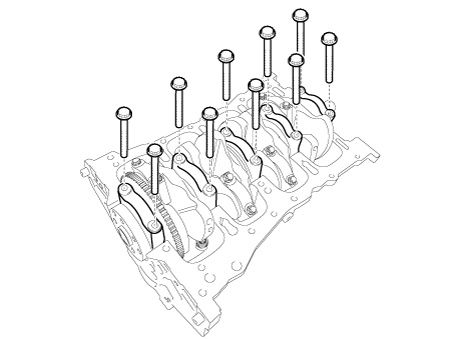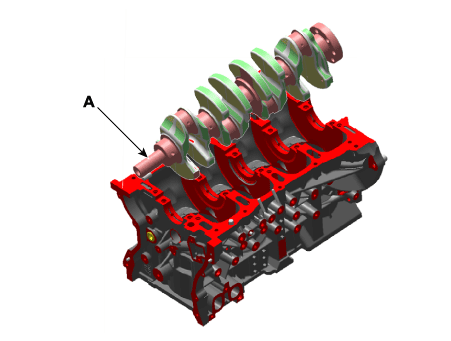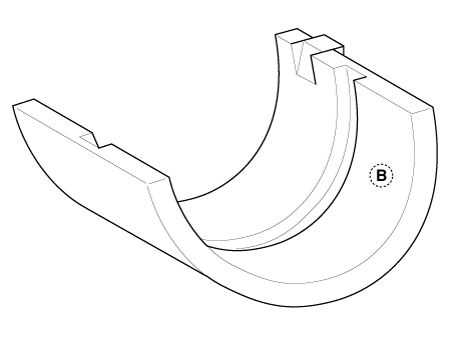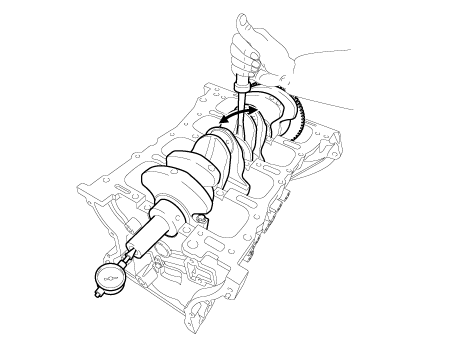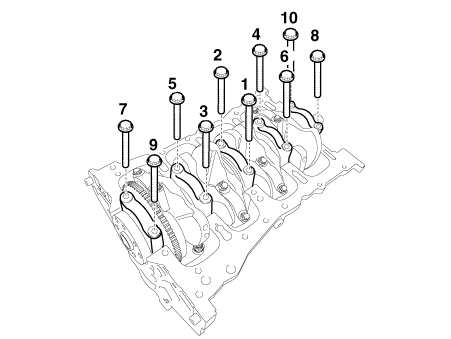Kia Sportage: Cylinder Block / Crankshaft Repair procedures
Kia Sportage QL (2015-2025) Service Manual / Engine Mechanical System / Cylinder Block / Crankshaft Repair procedures
| Disassembly |
In case of removing the high pressure fuel pump, high pressure fuel
pipe, delivery pipe, and injector, there may be injury caused by leakage
of the high pressure fuel. So don’t do any repair work right after engine
stops.
|
|
Mark all wiring and hoses to avoid misconnection
|
| 1. |
Remove the engine assembly from the vehicle.
(Refer to Engine and Transaxle Assembly - “Engine and Transaxle Assembly”)
|
| 2. |
Remove the transaxle assembly from the engine assembly.
(Refer to Automatic Transaxle System - "Automatic Transaxle")
|
| 3. |
Remove the drive plate.
(Refer to Cylinder Block - "Drive Plate")
|
| 4. |
Install the engine to engine stand for disassembly.
|
| 5. |
Remove the intake manifold.
(Refer to Intake and Exhaust System - "Intake Manifold")
|
| 6. |
Remove the exhaust manifold.
(Refer to Intake and Exhaust System - "Exhaust Manifold")
|
| 7. |
Remove the timing chain.
(Refer to Timing System - “Timing Chain”)
|
| 8. |
Remove the A/C compressor.
(Refer to Heating, Ventilation Air conditioning - "Compressor")
|
| 9. |
Remove the alternator.
(Refer to Engine Electrical System - "Alternator ")
|
| 10. |
Remove the water temperature control assembly.
(Refer to Cooling System - "Water Temperature Control Assembly")
|
| 11. |
Remove the balance shaft & oil pump.
(Refer to Lubrication System - "Balance Shaft & Oil Pump")
|
| 12. |
Remove the ladder frame.
(Refer to Cylinder Block -"Cylinder Block")
|
| 13. |
Check the connecting rod end play.
|
| 14. |
Remove piston and connecting rod assemblies.
(Refer to Cylinder Block - "Piston and Connecting Rod")
|
| 15. |
Remove crankshaft bearing cap and check oil clearance.
|
| 16. |
Check the crankshaft end play.
|
| 17. |
Lift the crankshaft (A) out of the engine, being careful not to damage
journals.
|
| Inspection |
| 1. |
Check the crankshaft bearing oil clearance.
Crankshaft Bore Identification Mark
Letters have been stamped on the block as a mark for the size of each
of the 5 main journal bores.
Use them, and the numbers or bar stamped on the crank (marks for main
journal size), to choose the correct bearings.
Cylinder Block Specifications
Crankshaft Journal Identification Mark
Crankshaft Specifications
Crankshaft Bearing Identification Mark
Crankshaft Bearing Specifications
Selection Chart For Crankshaft Bearings
|
| 2. |
Check crankshaft end play.
Using a dial indicator, measure the thrust clearance while prying the
crankshaft back and forth with a screwdriver.
If the end play is greater than maximum, replace the thrust bearings
as a set.
|
| 3. |
Inspect main journals and crank pins.
Using a micrometer, measure the diameter of each main journal and crank
pin.
|
| Reassembly |
| 1. |
Install the main bearings.
|
| 2. |
Install the thrust bearings.
Install the 2 thrust bearings (A) under the No.3 journal position of
the cylinder block with the oil grooves facing outward.
|
| 3. |
Install the oil jet (A).
|
| 4. |
Place the crankshaft (A) on the cylinder block.
|
| 5. |
Place the main bearing caps on cylinder block.
|
| 6. |
Install the main bearing cap bolts.
|
| 7. |
Check crankshaft end play.
|
| 8. |
Assemble the other parts in the reverse order of disassembly.
|
 Piston and Connecting Rod Repair procedures
Piston and Connecting Rod Repair procedures
Disassembly
In case of removing the high pressure fuel pump, high pressure fuel
pipe, delivery pipe, and in ...
 Cylinder Block Repair procedures
Cylinder Block Repair procedures
Disassembly
In case of removing the high pressure fuel pump, high pressure fuel
pipe, delivery pipe, and in ...
Other information:
Kia Sportage QL (2015-2025) Service Manual: Components and components location
Components 1. Rear bumper cover 2. Rear bumper beam 3. Rear bumper side under cover 4. Rear bumper side bracket ...
Kia Sportage QL (2015-2025) Service Manual: Rear Back Armrest Components and components location
Component Location 1. Rear back armrest ...
Copyright © www.ksportagegl.com 2015-2025





